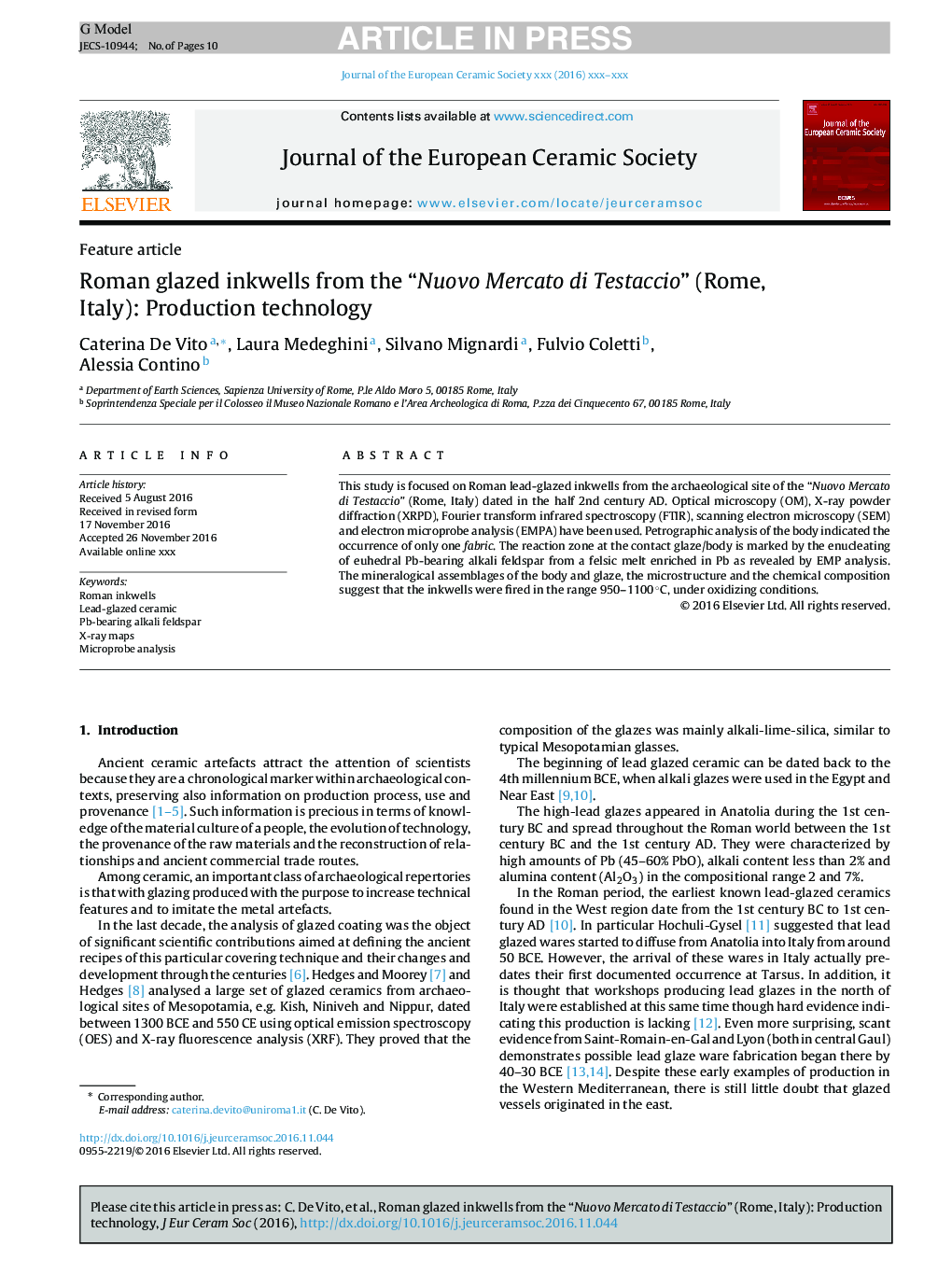| Article ID | Journal | Published Year | Pages | File Type |
|---|---|---|---|---|
| 5440707 | Journal of the European Ceramic Society | 2017 | 10 Pages |
Abstract
This study is focused on Roman lead-glazed inkwells from the archaeological site of the “Nuovo Mercato di Testaccio” (Rome, Italy) dated in the half 2nd century AD. Optical microscopy (OM), X-ray powder diffraction (XRPD), Fourier transform infrared spectroscopy (FTIR), scanning electron microscopy (SEM) and electron microprobe analysis (EMPA) have been used. Petrographic analysis of the body indicated the occurrence of only one fabric. The reaction zone at the contact glaze/body is marked by the enucleating of euhedral Pb-bearing alkali feldspar from a felsic melt enriched in Pb as revealed by EMP analysis. The mineralogical assemblages of the body and glaze, the microstructure and the chemical composition suggest that the inkwells were fired in the range 950-1100 °C, under oxidizing conditions.
Keywords
Related Topics
Physical Sciences and Engineering
Materials Science
Ceramics and Composites
Authors
Caterina De Vito, Laura Medeghini, Silvano Mignardi, Fulvio Coletti, Alessia Contino,
